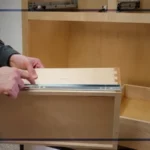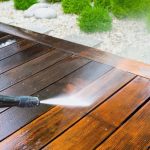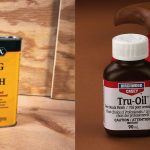Why Is My Polyurethane Sticky? Common Causes And How To Fix Them
Polyurethane is a popular choice for sealing and protecting various surfaces due to its durability and versatility. However, it can sometimes become sticky, leaving you puzzled and wondering why.
So, why is my polyurethane sticky? Polyurethane can turn sticky due to various factors, including
- The age of the polyurethane itself
- Insufficient drying time between coats
- The natural rubbery texture of the certain formulation
- Applying it over oily surfaces
- Needing more time for proper curing
Continue reading to gain valuable insights into the drying time of polyurethane. You can learn factors that affect drying, and a step-by-step guide to fixing sticky polyurethane.
Why Is My Polyurethane Sticky?
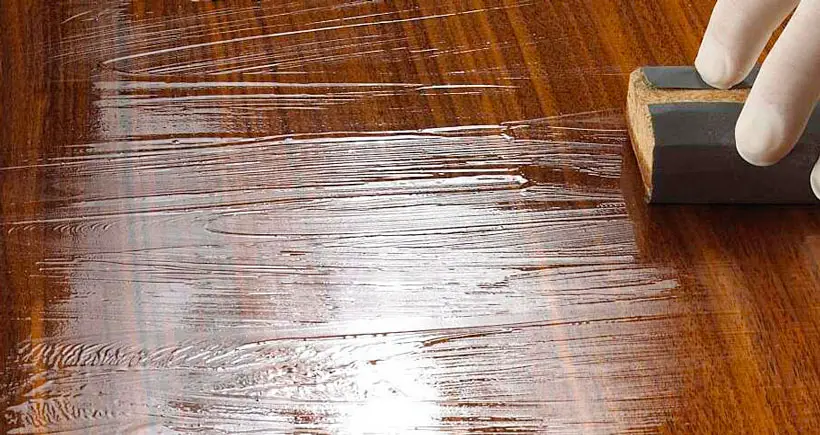
There are several reasons why your polyurethane is sticky. They include the following.
1. Age Of The Polyurethane
One possible reason for sticky polyurethane is the age of the product. Polyurethane has a limited shelf life, and using expired or old polyurethane can lead to sticky results.
Over time, the product’s chemical composition can change, affecting its drying and curing properties. Hence, it’s crucial to check the expiration date and ensure you’re working with new polyurethane.
2. You Didn’t Allow Enough Time To Dry Between Coats
Polyurethane requires sufficient drying time between coats to achieve a proper bond and avoid stickiness. Suppose you apply a subsequent coat of polyurethane before the previous one has dried completely.
In that case, the solvents in the fresh coat can reactivate the underlying layer, resulting in a sticky surface. So, patience is key when working with polyurethane; adequate drying time between coats is essential. If you use an oil-based polyurethane, it will take 24 hours to dry. Alternatively, if it’s a water-based polyurethane, it will dry in about 6-8 hours.
3. It’s A Natural Rubber Texture
Some types of polyurethane, particularly certain oil-based formulations, can exhibit a naturally rubbery texture when fully cured.
While this may not necessarily be sticky, it can create a tacky feeling, especially in humid environments. If the stickiness is accompanied by a rubbery texture, it could be due to the nature of the polyurethane itself.
4. You Applied It Over A Stained Material With Highly Oily Deposits
Polyurethane may become sticky if applied over a surface that needs to be adequately prepared.
If you apply polyurethane over a stained material with oily deposits, the oil can seep through the finish, interfering with the drying and curing process. Therefore, it’s crucial to ensure that the surface is clean, free from any contaminants, and properly prepared before applying polyurethane.
5. You Didn’t Let It Cure For Long Enough
Curing time differs from drying time and refers to the period required for the polyurethane to reach its maximum hardness and durability. If you’ve applied the polyurethane recently and it feels sticky, it may still need to cure fully.
Even after drying, the solvents that hold the polyurethane suspended are not completely removed. They will continue to evaporate, which is why the curing process is essential.
How Long Does Polyurethane Take To Dry?
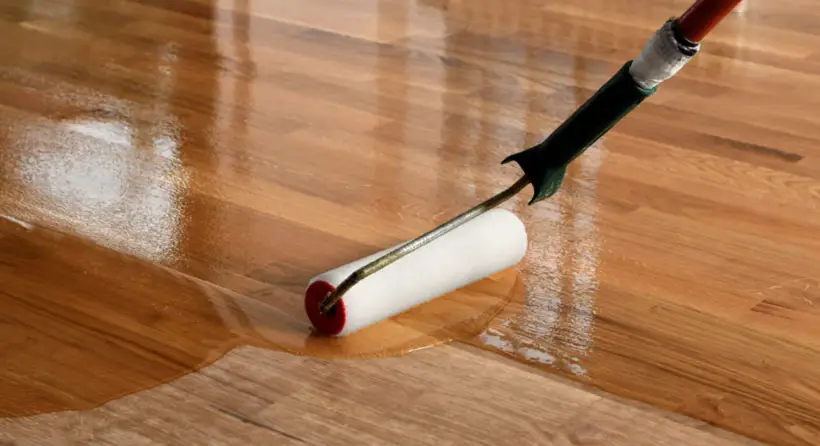
The drying time of polyurethane depends on the type of formulation used: oil-based or water-based.
Oil-Based Polyurethane
Oil-based polyurethane typically requires 24 hours to be ready for re-coating and around 48 hours to cure fully. The drying time can vary based on environmental factors such as temperature and humidity.
It’s advisable to consult the manufacturer’s instructions for specific drying times, as different brands may have slightly different recommendations.
Water-Based Polyurethane
Water-based polyurethane generally dries faster than oil-based polyurethane. It usually takes 6 to 8 hours to be ready for re-coating and approximately 24 hours to cure fully.
Factors That Affect The Drying Time Of Polyurethane
Several factors can impact the drying time of polyurethane. By understanding these factors, you can take appropriate measures to optimize the drying process and achieve the desired results.
Temperature
Temperature plays a crucial role in polyurethane drying. Warmer temperatures facilitate faster drying, while colder temperatures can significantly extend the drying time.
Ideally, the ambient temperature should be within the range specified by the manufacturer. It’s important to avoid applying polyurethane in extreme temperatures, as it can negatively affect the drying and curing process.
Type Of Polyurethane
Different types of polyurethane formulations have varying drying characteristics. Oil-based polyurethane tends to have longer drying times compared to water-based alternatives.
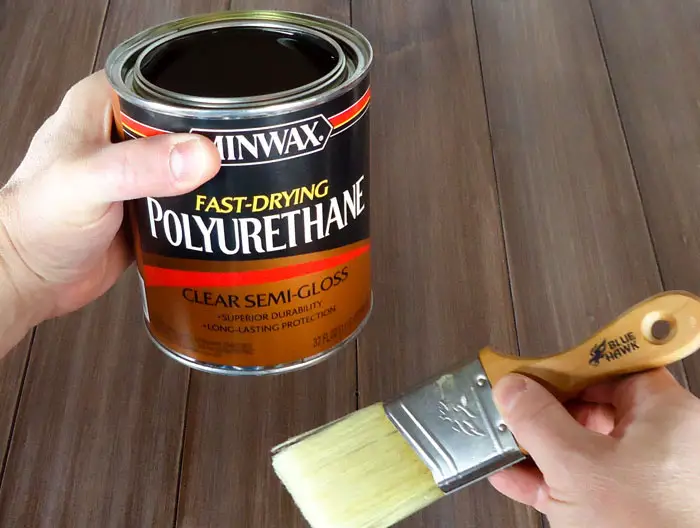
Additionally, different brands may have slightly different drying guidelines due to variations in their formulations. Always refer to the manufacturer’s instructions for accurate drying times specific to your product.
Humidity
Humidity levels in the environment can significantly impact the drying time of polyurethane. High humidity can slow down the evaporation of solvents, prolonging the drying process. This will lead to poor paint adhesion.
Conversely, low humidity can accelerate drying but may cause the polyurethane to cure too quickly, potentially compromising its performance. Working in an environment with moderate humidity is essential for optimal drying results.
Ventilation
Proper ventilation is crucial when working with polyurethane. Sufficient airflow helps the solvents evaporate more efficiently, promoting faster drying.
Inadequate ventilation can result in prolonged drying times and increased stickiness. So, ensure your workspace has good ventilation through natural airflow, fans, or exhaust systems.
The Thickness Of The Finish
The thickness of the polyurethane layer can influence the drying time. Thicker coats take longer to dry and cure compared to thin coats.
It’s important to follow the manufacturer’s guidelines regarding the recommended thickness of each coat. Applying excessively thick layers can prolong drying times and lead to stickiness.
How To Know When Polyurethane Is Dry?
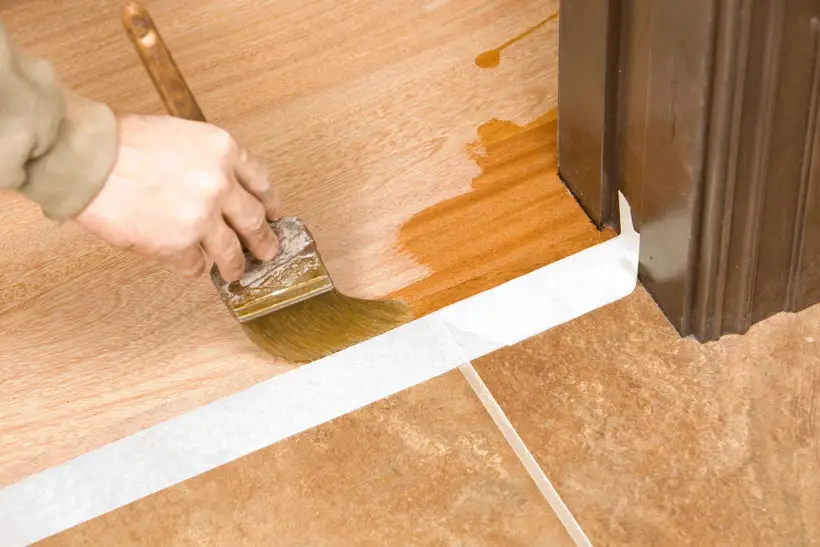
Determining whether polyurethane has dried can be challenging, especially when the surface appears dry but feels sticky. Here are a few indicators to help you assess the drying and curing status of polyurethane:
Method 1: Visual Inspection
When polyurethane is fully dry, the top layer should have a glossy appearance. This indicates that the solvents have evaporated, and the polyurethane has formed a protective and durable finish. If the surface appears dull or matte, it may still be in the drying or curing stage.
Method 2: Bending The Polyurethane Coating
Another way to test the dryness of polyurethane is by gently pressing your finger against the coated surface.
If the polyurethane is fully dry, it should not leave any indentation or mark. However, the drying process must still be completed if it feels tacky or has a dent.
Method 3: Perform A Water Test
You can perform a simple water test to determine if the polyurethane has cured. Sprinkle a few drops of water onto the surface and observe the reaction.
The polyurethane is fully cured if the water beads up or sits on top without being absorbed. It becomes water-resistant once it cures. However, if the water soaks into the finish or causes it to become tacky, it suggests that the curing process is incomplete.
Method 4: Touch The Polyurethane Coating
When you lightly touch the polyurethane-coated surface, it should feel warm to the touch. This indicates that the chemical reactions during the drying process have taken place.
How to Fix Sticky Polyurethane?
Dealing with sticky polyurethane can be frustrating, but there are steps you can take to fix the issue and achieve the desired smooth finish. Here’s a simplified step-by-step guide to help you rectify sticky polyurethane:
Tools You Will Need
- Dehumidifier
- A fan
- Thinning agent (e.g., mineral spirit)/ Paint thinner
- A rag
- Goggles
- Gloves
- A respirator
- Old brush
- Paint stripper
- Plastic scraper
- A damp cloth/scrub pad
Step 1: Allow for additional curing time
Sometimes, the polyurethane simply needs more time to dry and cure properly. Wait a few more days and monitor the finish. If it emits an odor, it will likely still be curing.
Step 2: Control humidity levels
If you’re working in a humid environment, run a dehumidifier in the room for a few days to reduce moisture. Additionally, direct a fan towards the surface to promote faster drying.
Step 3: Use a thinning agent
If the polyurethane is too thick, you can use a thinning agent like mineral spirits or paint thinner. Dampen a rag with the thinner and gently wipe the surface. Allow a couple of days for it to dry.
Step 4: Apply another sealant
If the previous steps haven’t resolved the stickiness and the finish is only slightly tacky, you can apply another type of sealant on top. Ensure the surface is not wet but slightly tacky before proceeding.
Step 5: Consider stripping and starting fresh
If all else fails, it may be necessary to strip the varnish completely and reapply it.
Step 6: Safety precautions
Before stripping the varnish, wear goggles, gloves, and a respirator to protect yourself from potential hazards.
Step 7: Apply paint stripper
Use an old brush to apply the paint stripper onto the polyurethane-coated surface generously. Ensure the surface is evenly coated, allowing the stripper to effectively break down the top coat.
Step 8: Allow the stripper to penetrate
Let the paint stripper sit for approximately 10 to 15 minutes. This allows sufficient time to penetrate the polyurethane and begin breaking it down.
Step 9: Remove the loose polyurethane
Using a plastic scraper, gently remove the bubbled and peeling polyurethane. Apply moderate pressure, as the plastic scraper won’t damage the wood.
Step 10: Clean the remaining residue
Use a damp cloth or a scrub pad to remove any remaining bits of polyurethane. If the cloth becomes dry or clogged, dip it in water to continue stripping the polyurethane.
If you’re facing the issue of sticky polyurethane and seeking solutions, our guide on what to do if polyurethane won’t dry might provide insights into troubleshooting and resolving the problem. Additionally, if you’re comparing polyurethane and epoxy wood finishes to determine the best choice for your project, our article on polyurethane vs. epoxy wood finish considerations is here to offer insights. We understand the importance of achieving the best finishes and addressing specific application challenges, and our comprehensive resources are designed to help you navigate and make informed choices for your woodworking projects.FAQs
Here are a few additional questions you may be wondering about right now.
Q1: Can I apply polyurethane over sticky polyurethane?
No. It’s generally not recommended to apply fresh polyurethane over a sticky surface. The stickiness can interfere with the adhesion and drying of the new coat, resulting in an unsatisfactory finish. It’s essential to resolve the stickiness before reapplying polyurethane.
Q2: Should I sand sticky polyurethane?
Sanding sticky polyurethane can help remove the sticky surface and provide a smoother base for reapplication. Use fine-grit sandpaper and sand gently to avoid damaging the underlying surface.
Q3: Will a fan help polyurethane dry faster?
Yes, using a fan to create airflow over the surface can help expedite the drying process of polyurethane. The moving air helps to evaporate moisture and promotes faster drying. However, ensure that the fan is not blowing directly onto the surface, as it can cause dust or debris to settle on the wet finish.
Conclusion
Understanding why polyurethane becomes sticky is crucial for achieving smooth and flawless finishes. If you are dealing with sticky polyurethane, follow the step-by-step guide to rectify the issue. Remember to take appropriate safety precautions and consult manufacturer guidelines throughout the process.
Ultimately, a properly cured and well-applied polyurethane coating will provide a hard, silky-smooth texture that protects and enhances your surfaces for years. So, the next time you ask yourself, “Why is my polyurethane sticky?” you’ll be equipped with the knowledge and solutions to tackle the issue head-on and achieve professional-quality results.

